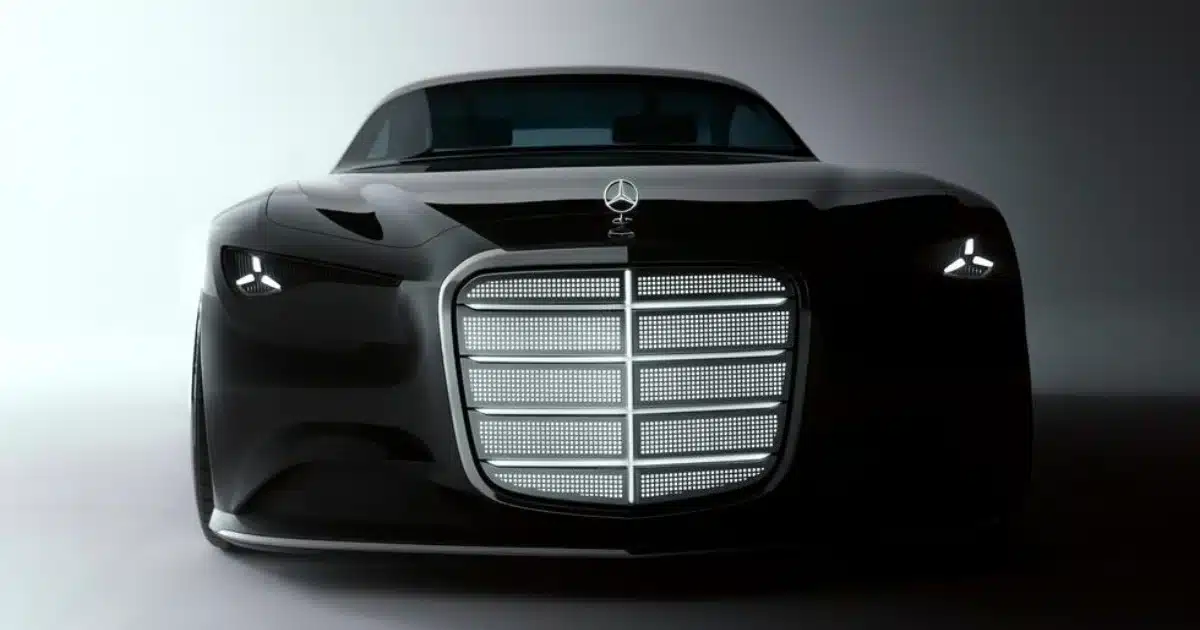Art Deco-inspired electric coupe concept
Mercedes-Benz has unveiled the Vision Iconic, a bold coupe that blends its past stories with a high-tech electric future. For a carmaker as old as Mercedes, preserving heritage while innovating is a major challenge and an even greater milestone.
The Vision Iconic is a sleek two-door sedan featuring a dramatically long hood and a steeply sloping cabin that evokes the luxury touring cars of the 1930s. Even the front grille is illuminated with details borrowed from the new GL electric car, underscoring Mercedes' goal of blending "design cues" from its history with modern electric car design.
Classic design cues
The Vision Iconic pays tribute to the golden era of Mercedes. Its exterior appearance is dominated by an extra-long hood, flowing roof, and massive wheels. Part of it is inspired by 1930s Art Deco coupes like the Mercedes SSK and 500K.
Behind the doors, the body is transparent, allowing the chrome strip along the elegant swing-out windows to be polished. The rear tapers to a boat tail shape with thin horizontal taillights, reminiscent of the 1954 Mercedes 300 SL Gullwing.
Illuminated mesh and lighting

The face of the Vision Iconic is dominated by a large backlit grille and glowing star decoration. It appears to be using the recently launched Marcedes Benz grill that has thousands of small square LEDs. Even the upright three-pointed hood ornament has been illuminated on this concept, adding to the flare of the grille all the way to the tip of the long nose.
The grille is flanked by thin, pointed headlights that reflect the Mercedes star logo, and precise openings and edges keep the design clean. These bold lighting cues are based on those seen in the new GLC electric car and upcoming models, linking the Vision Iconic to the existing Mercedes EV family.
Lounge-like cabin
Inside, Vision Iconic blends classic luxury with futuristic touches. The centerpiece is a curved glass instrument panel called “Zeppelin” which houses a collection of small analogue gauges and clocks. One of the watch faces bears the Mercedes logo and serves as an artificial intelligence companion.

In front of the driver is a large, antique-style four-spoke steering wheel with cabin materials emphasizing the vintage luxury appearance. The front is a single seat upholstered in rich blue velvet, and the floor is covered in intricate blue and gold inlays. Accents such as mother-of-pearl trim and polished brass handles add a sense of old-world luxury.
Efficient solar powered
Under its glossy black body, the Vision Iconic is covered in advanced solar cells. Mercedes is researching “ultra-thin” photovoltaic modules that can be applied like paste to car panels. The company estimates that covering approximately 11 square meters of surface (about the area of a mid-sized SUV) could theoretically garner up to 7,450 miles (12,000 km) of range per year under ideal conditions. More importantly, Mercedes points out that these solar films contain no rare earth metals, are easy to recycle, and can even generate power when the car is turned off.
Advanced autonomy and artificial intelligence
Mercedes envisions the Vision Iconic as more than just a design exercise, but rather a test bed for autonomous driving technology. The concept is said to support Level 2 driver assistance in complex urban traffic and up to Level 4 autonomous driving on highways. To deal with this, Mercedes is exploring neural computing that could make self-driving calculations up to 90% more energy efficient. Even the dashboard hints at smart features. The analogue watch bearing the Mercedes logo is described as an “AI companion,” indicating advanced virtual assistant capabilities.
Agile routing technology
To keep such a tall coupe agile, the Vision Iconic uses a steer-by-wire system. There is no mechanical link between the steering wheel and front wheel inputs are transmitted electronically allowing Mercedes to program different steering responses as needed. In practical terms, this allows the concept to seamlessly integrate rear axle steering, effectively reducing the turning circle during city driving.
The system can also reprogram the steering ratio at low speeds, so that the big wheel doesn't have to turn endlessly while the car is parked. Altogether, these technologies give the Vision Iconic the cornering agility of a much smaller car.
Shaping the future of Mercedes electric cars

While the Vision Iconic itself will certainly remain a one-off show car, its influence on future models is clear. The concept embodies what design chief Jordan Wagner calls “the ultimate expression of value, prestige and grace,” even as it looks forward. As one journalist pointed out, this futuristic blend of style and technology is intended to indicate the direction in which Mercedes EV design is headed.

